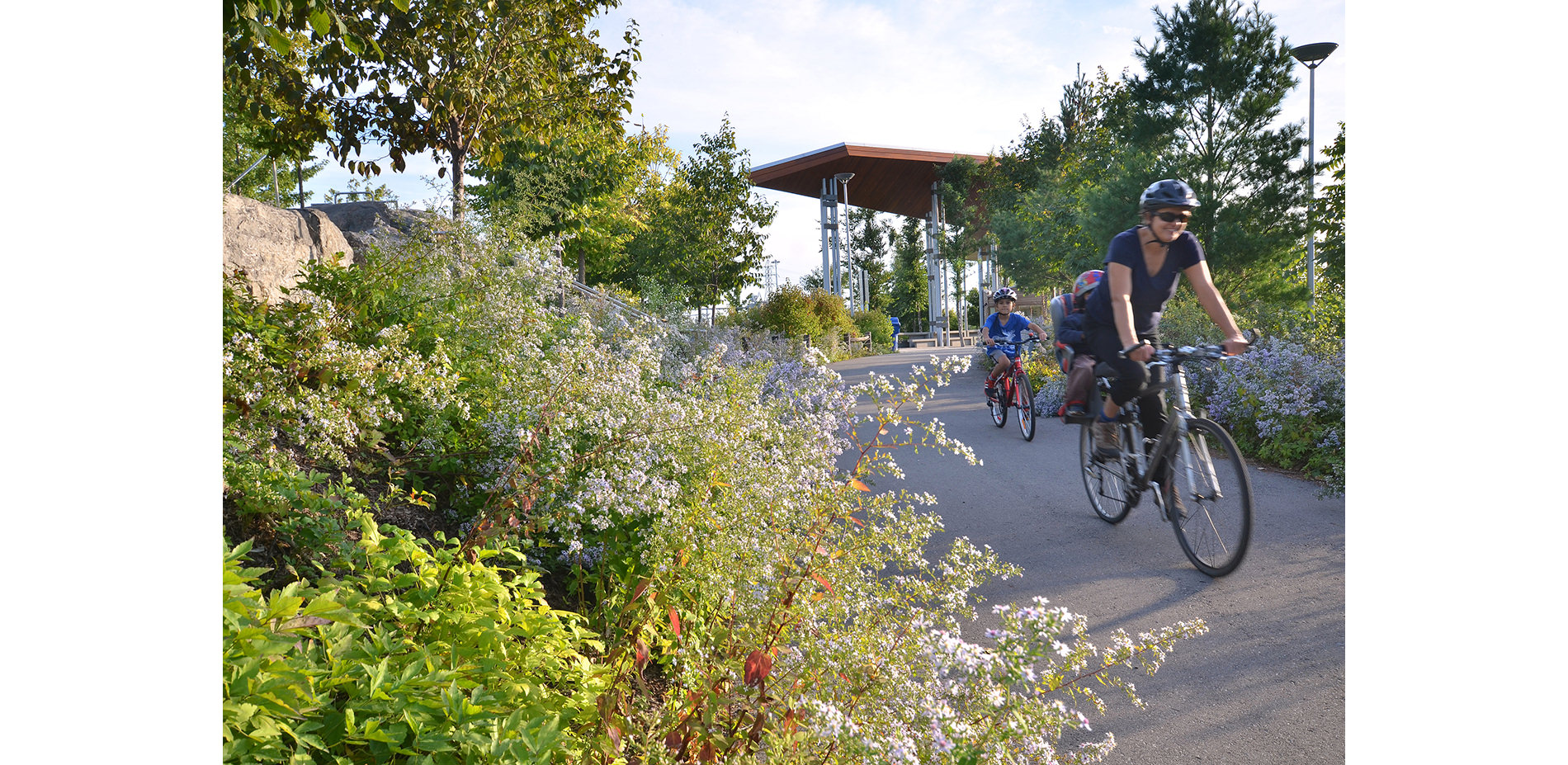
Flood Protection + Park:
Two hills with a valley lawn in between, the park contains both areas bursting with activity as well as more intimate paths meandering through Ontario’s native vegetation.
Photo Credit: Nicola Betts
Media: Please submit high-resolution image requests to images@asla.org.
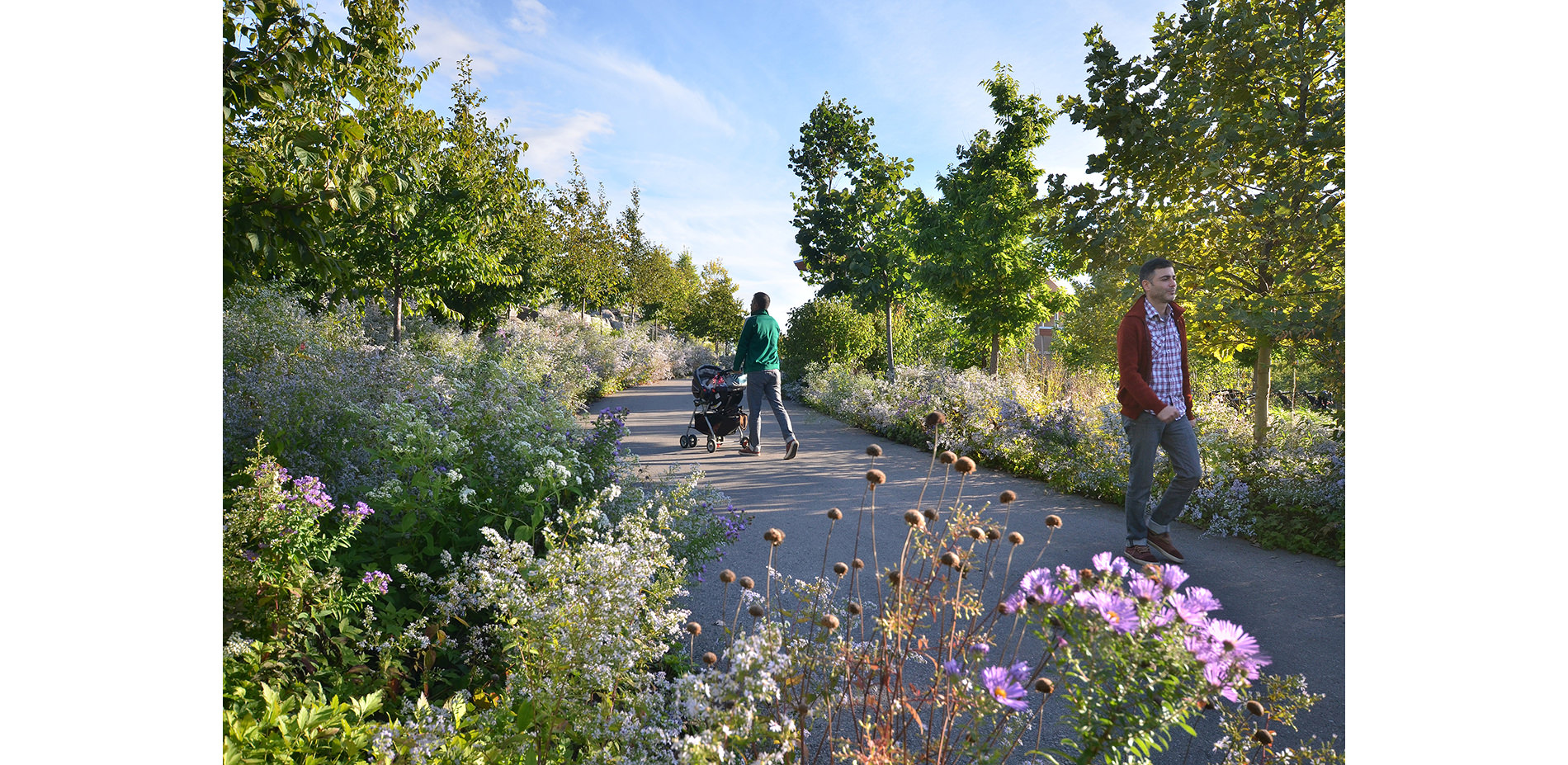
Seasonal:
In early fall, a profusion of blooms provides a late season nectar source for pollinators.
Photo Credit: Nicola Betts
Media: Please submit high-resolution image requests to images@asla.org.
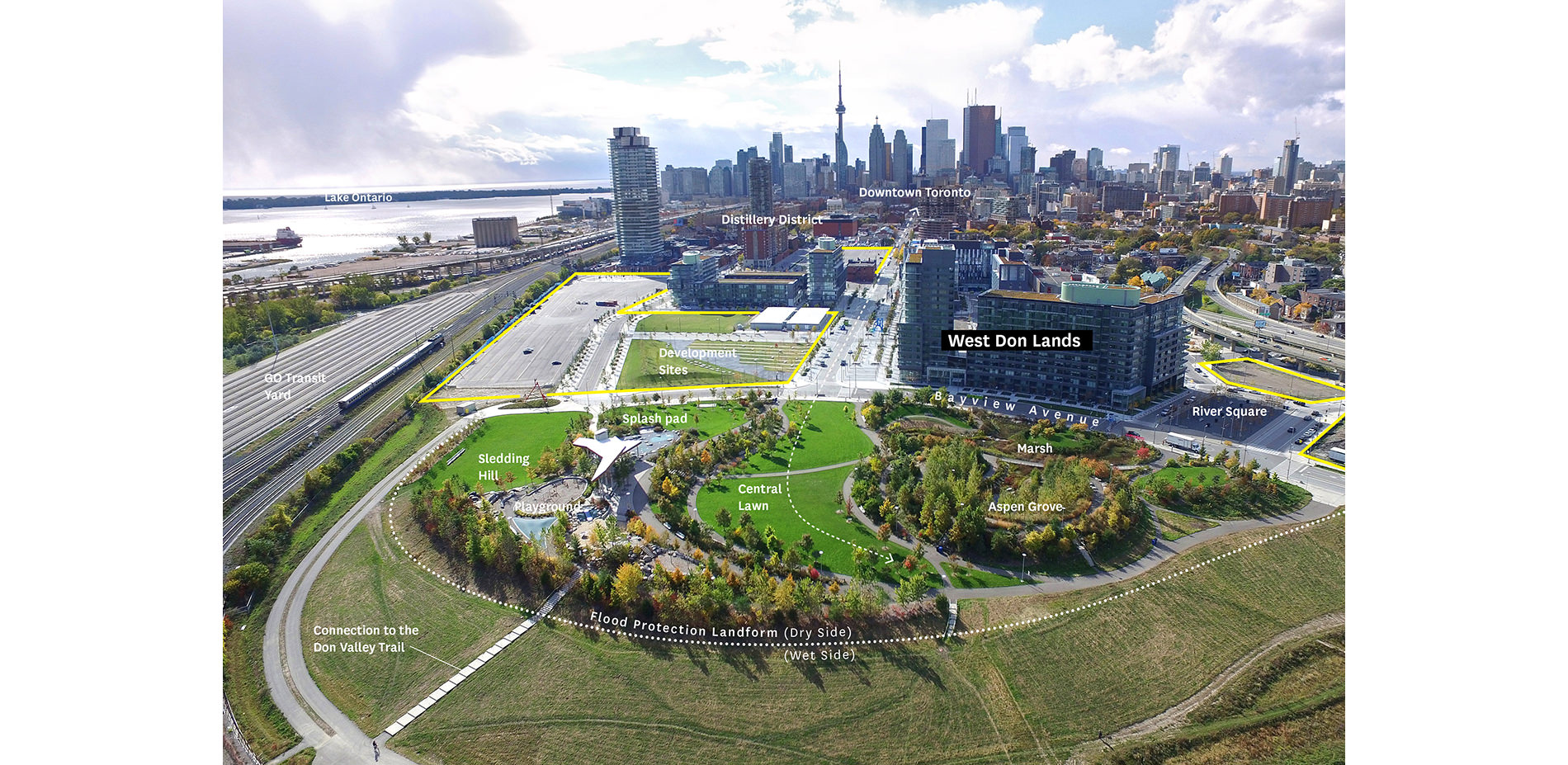
Landscape Led Urbanism:
With topographic variation, the park not only offers a range of micro-environments, but also acts as a visual and acoustical shield from existing civil infrastructure and industry.
Photo Credit: Nicola Betts
Media: Please submit high-resolution image requests to images@asla.org.
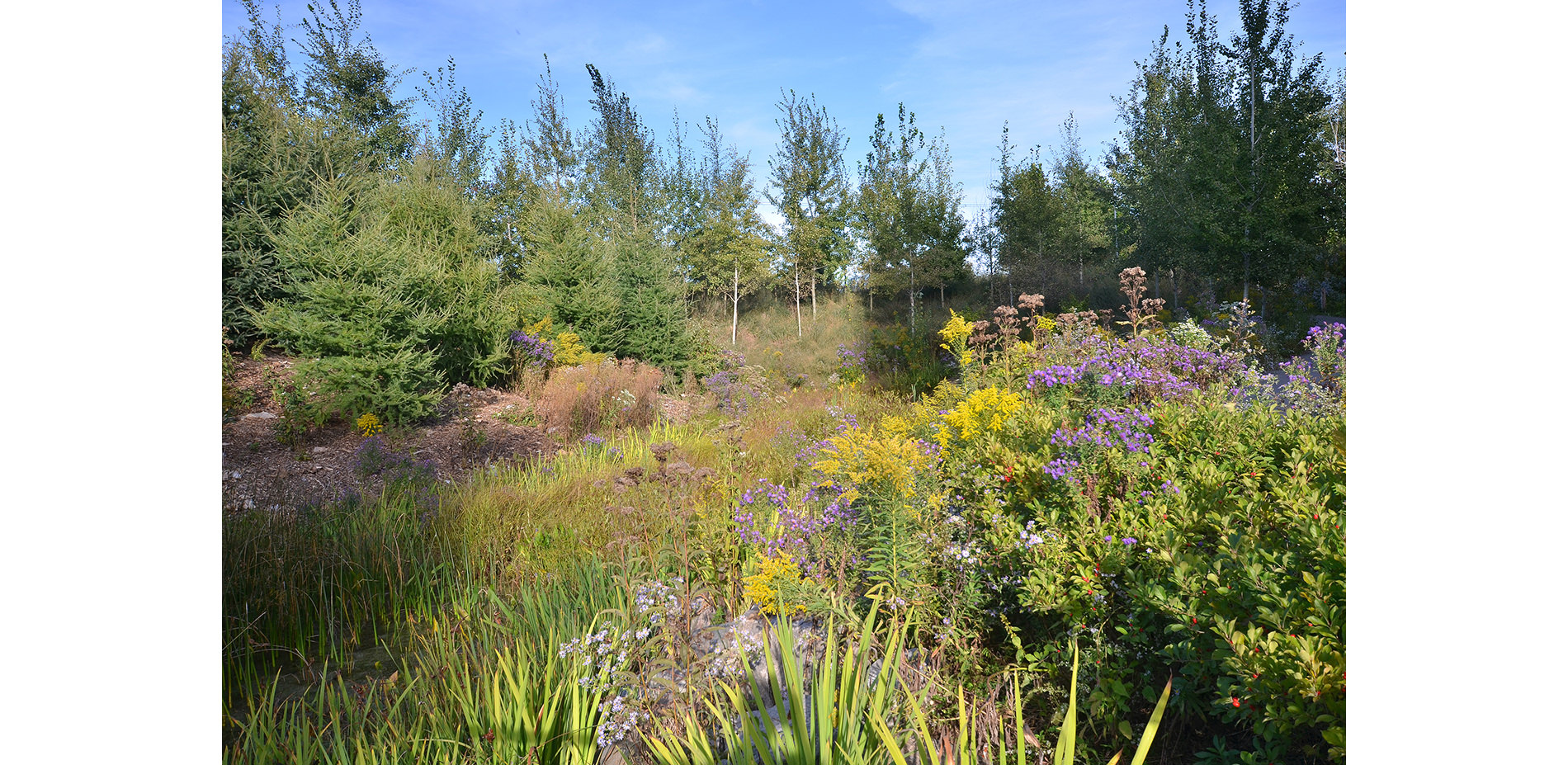
Edge Ecology:
Atop the sheltering topography of the marsh, woodland, meadow and aquatic plants interact vigorously in the ongoing process of renaturalizing a brownfield.
Photo Credit: Nicola Betts
Media: Please submit high-resolution image requests to images@asla.org.
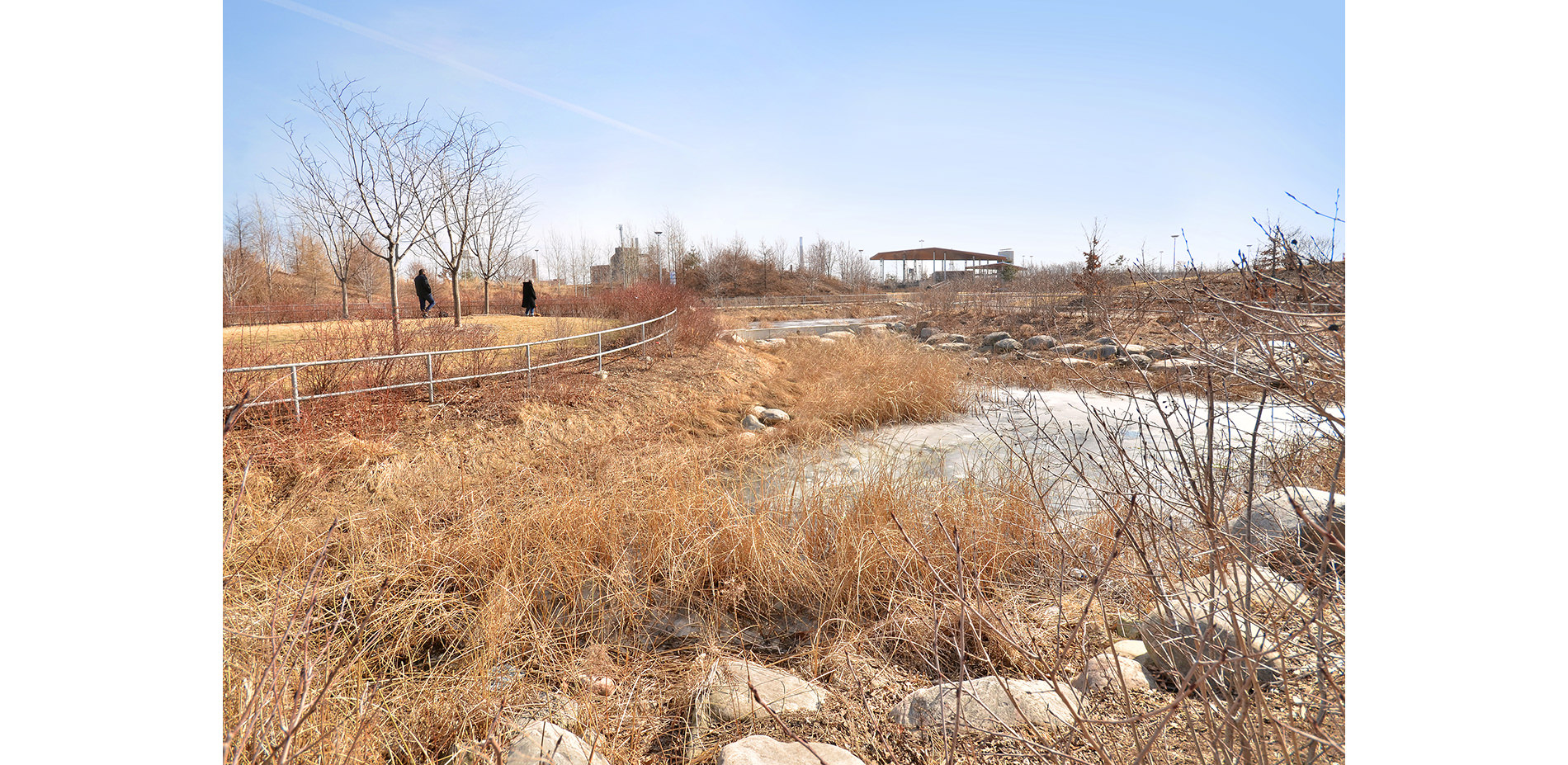
A Permeable Edge Prevails Along Bayview Avenue:
The floating roof of the pavilion that shelters the park office signals a destination from the street.
Photo Credit: Nicola Betts
Media: Please submit high-resolution image requests to images@asla.org.
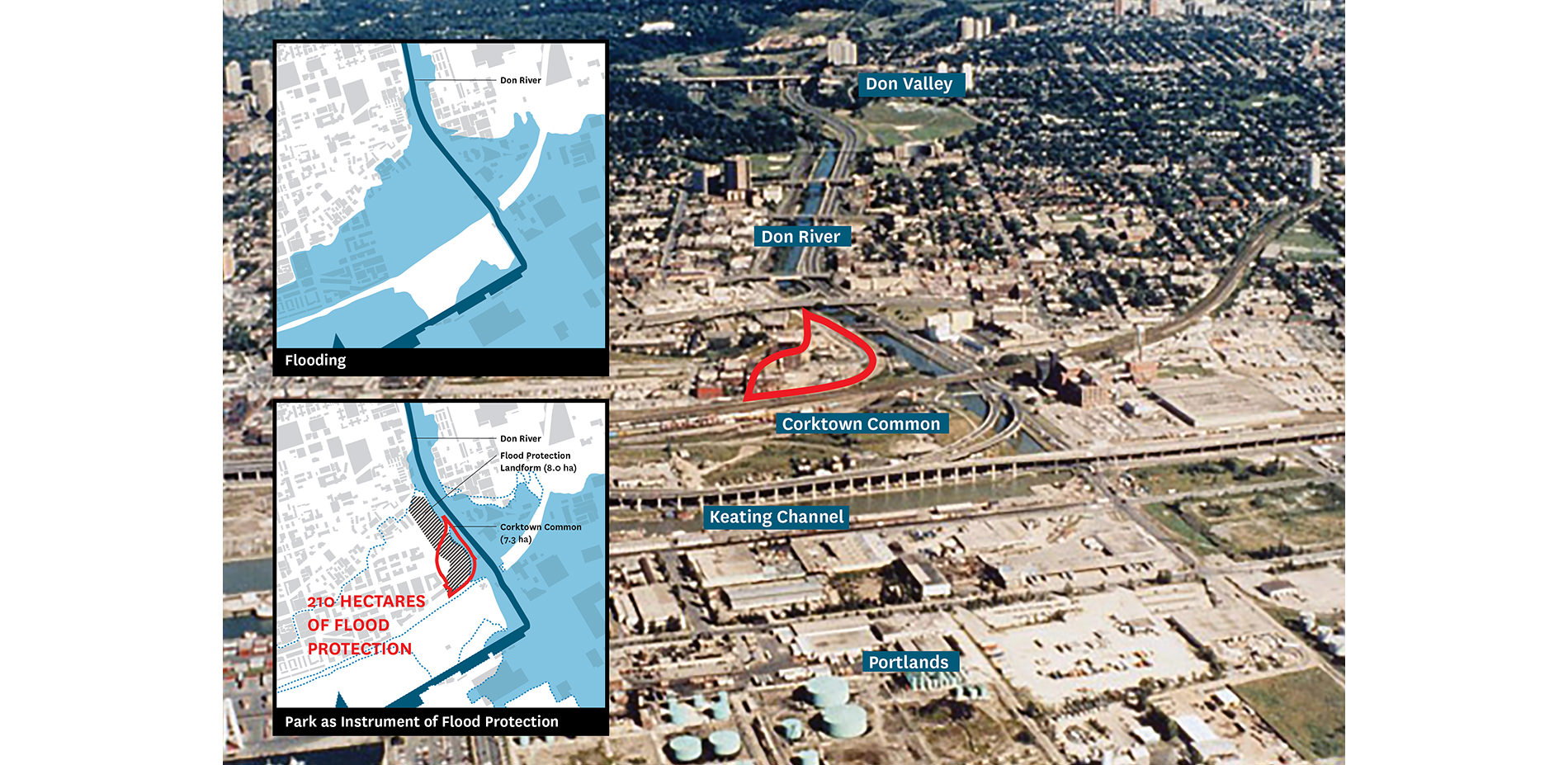
Site History:
Industrialized since the mid-19th century and a brownfield for decades, the site was a gateway for flood waters that threatened 210 hectares of the city.
Photo Credit: Michael Van Valkenburgh Associates, Inc.
Media: Please submit high-resolution image requests to images@asla.org.
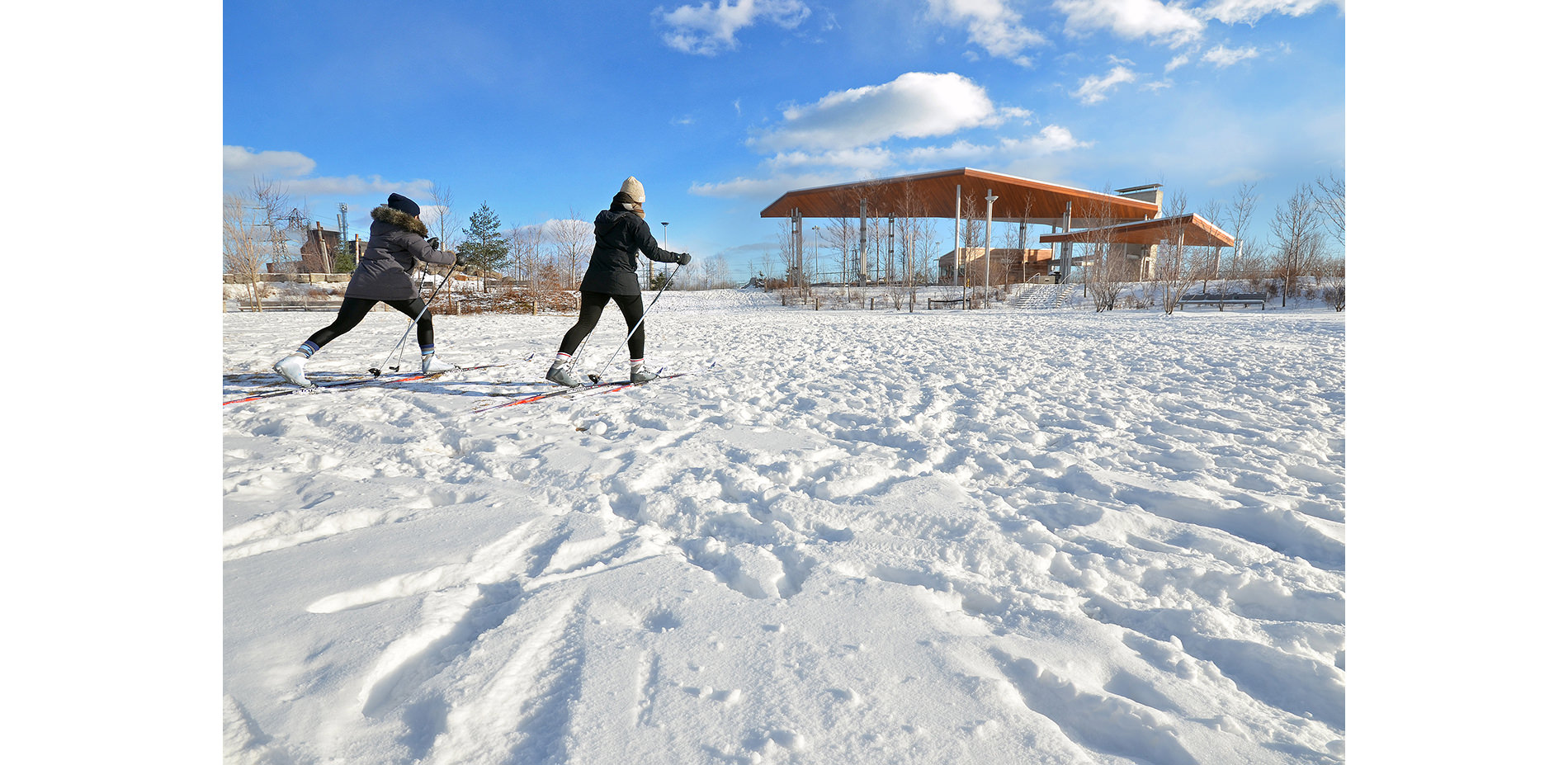
Four-Season Program:
The Central Lawn transforms under a blanket of snow, supporting recreational activity in all four seasons.
Photo Credit: Nicola Betts
Media: Please submit high-resolution image requests to images@asla.org.
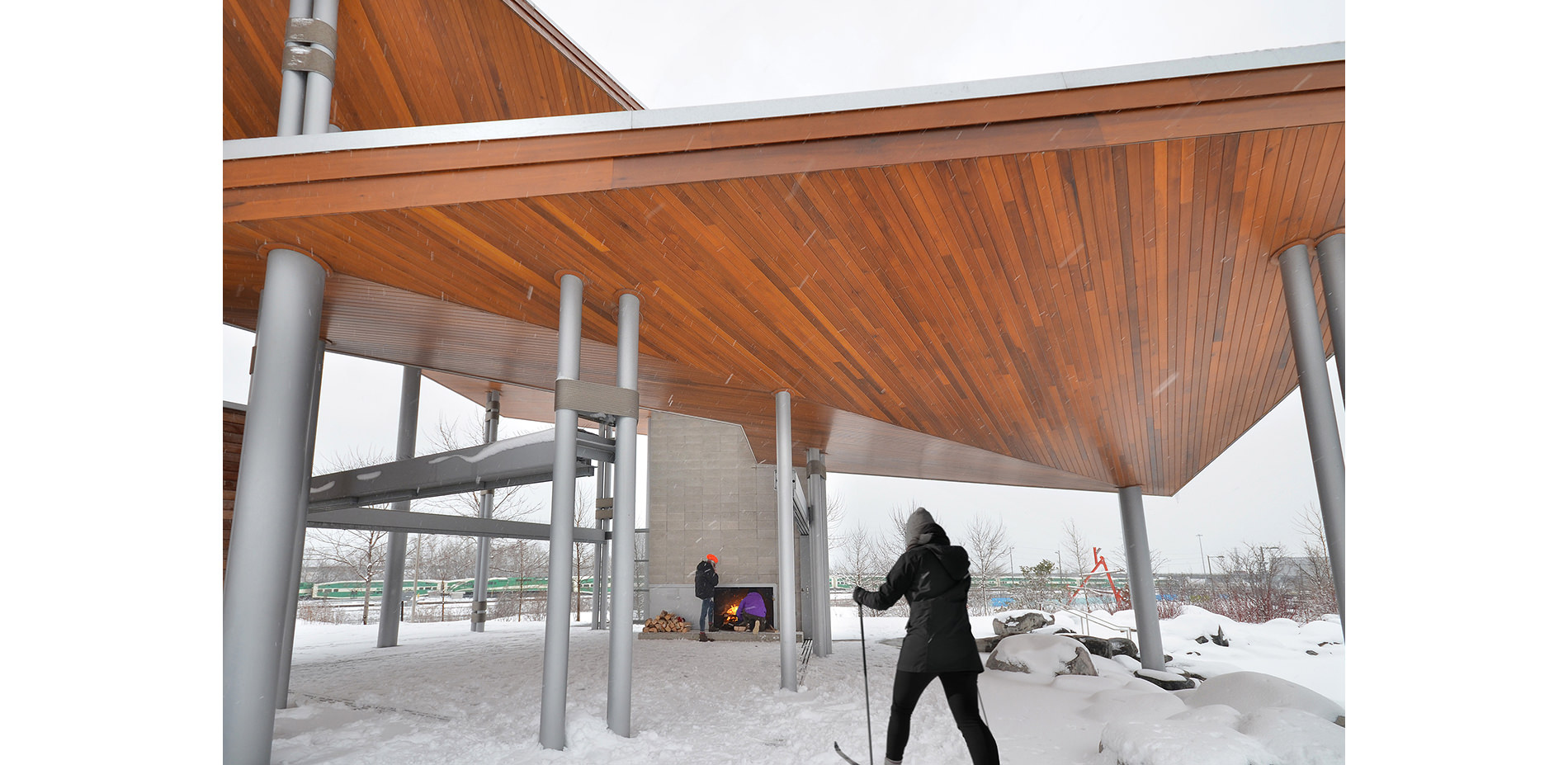
The Hearth:
The pavilion fireplace encourages gathering and warming up, and draws visitors to the park in the winter.
Photo Credit: Nicola Betts
Media: Please submit high-resolution image requests to images@asla.org.
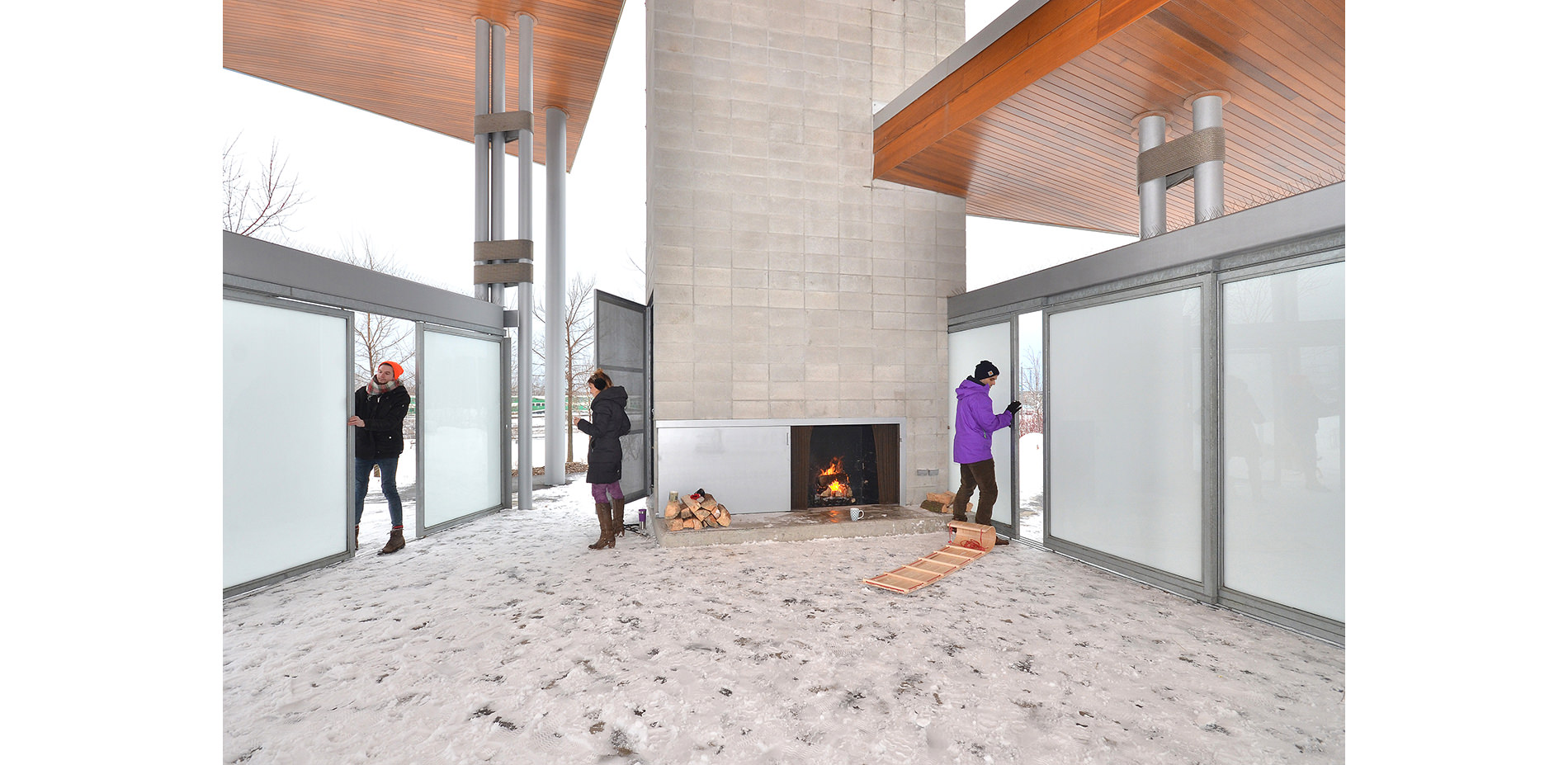
Warming Up:
Operable translucent glass walls provide shelter from the winter winds. The walls fold together in a lockable enclosure when not in use.
Photo Credit: Nicola Betts
Media: Please submit high-resolution image requests to images@asla.org.
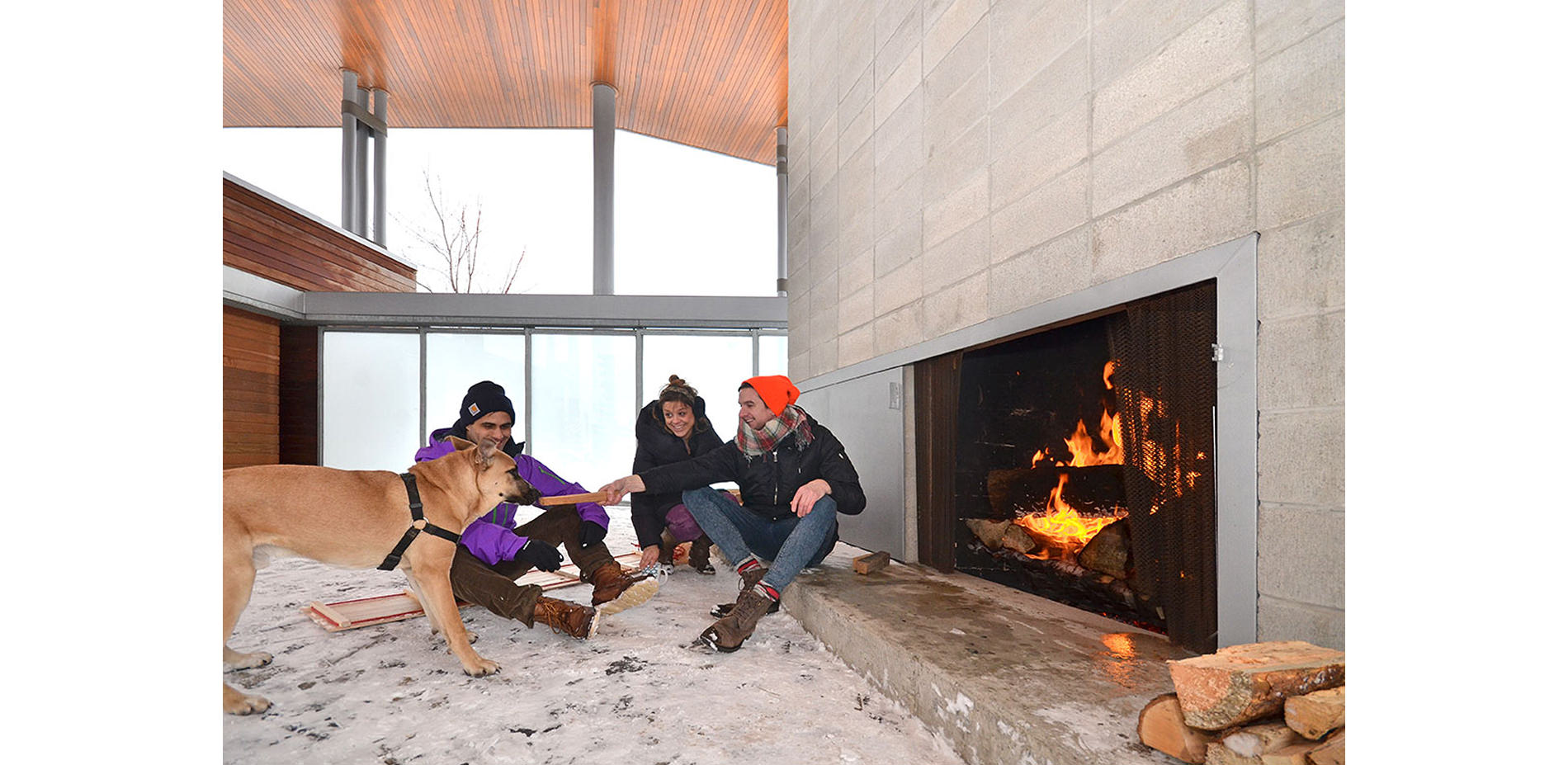
The Pavilion:
The centre of the active portion of the park.
Photo Credit: Nicola Betts
Media: Please submit high-resolution image requests to images@asla.org.
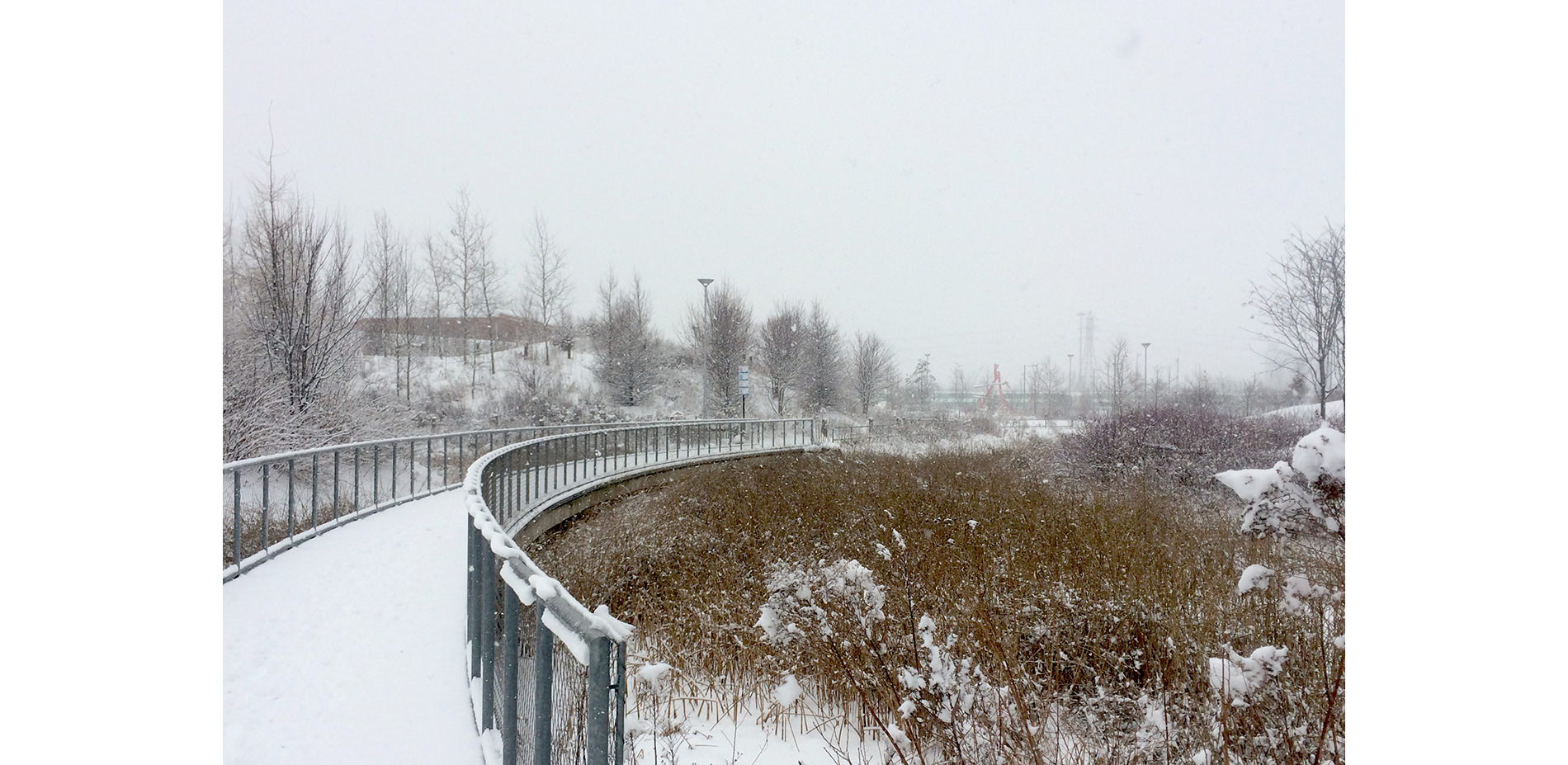
Biodiversity and Sustainability:
The constructed marsh has become a habitat for turtles and marine life, and serves as a bio-filtration system for the site’s runoff, which is then stored and used for irrigation.
Photo Credit: Michael Van Valkenburgh Associates, Inc.
Media: Please submit high-resolution image requests to images@asla.org.
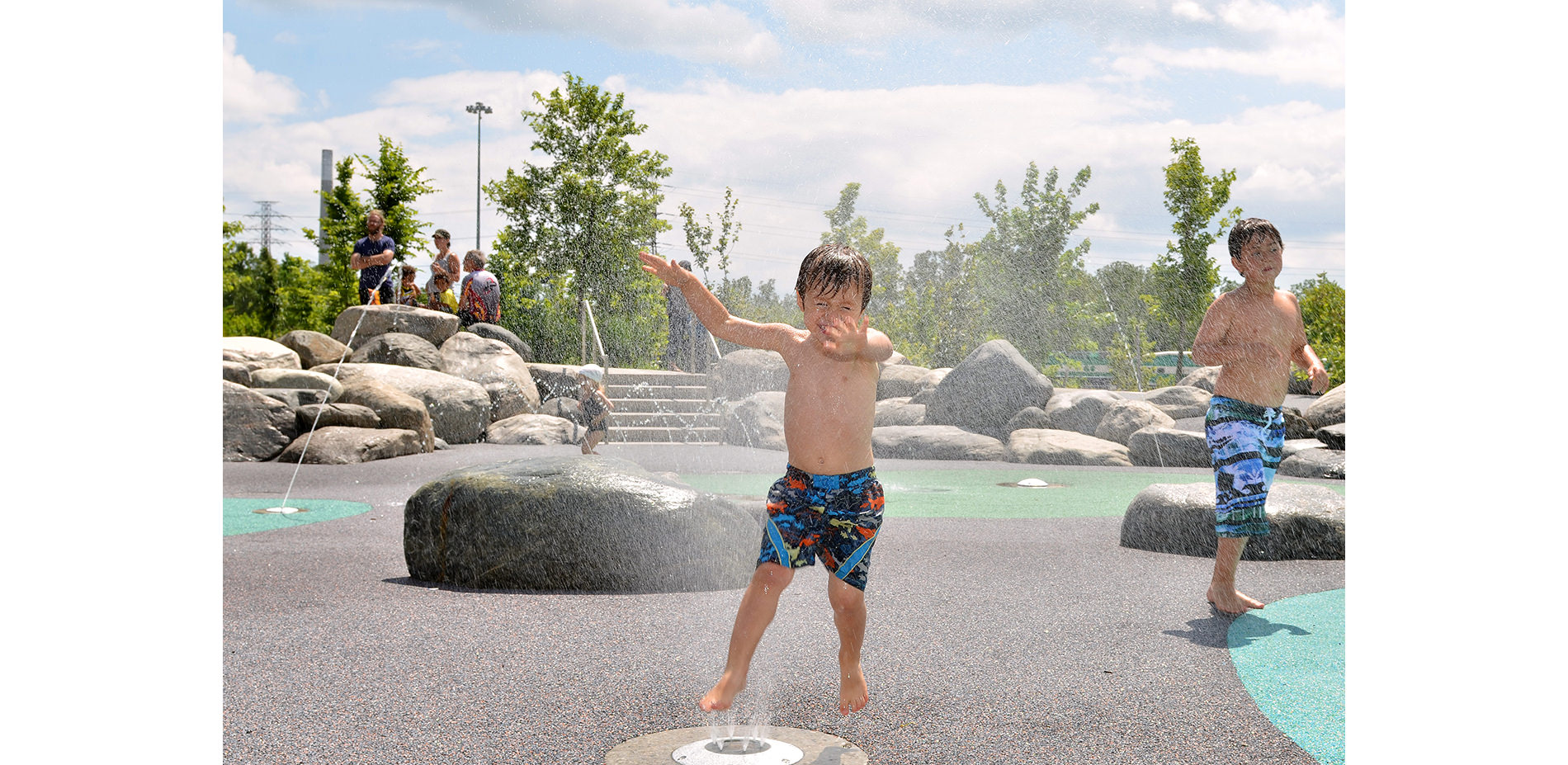
Splash Pad:
Grey water from the water play zones is fully recycled and reused throughout the park.
Photo Credit: Nicola Betts
Media: Please submit high-resolution image requests to images@asla.org.
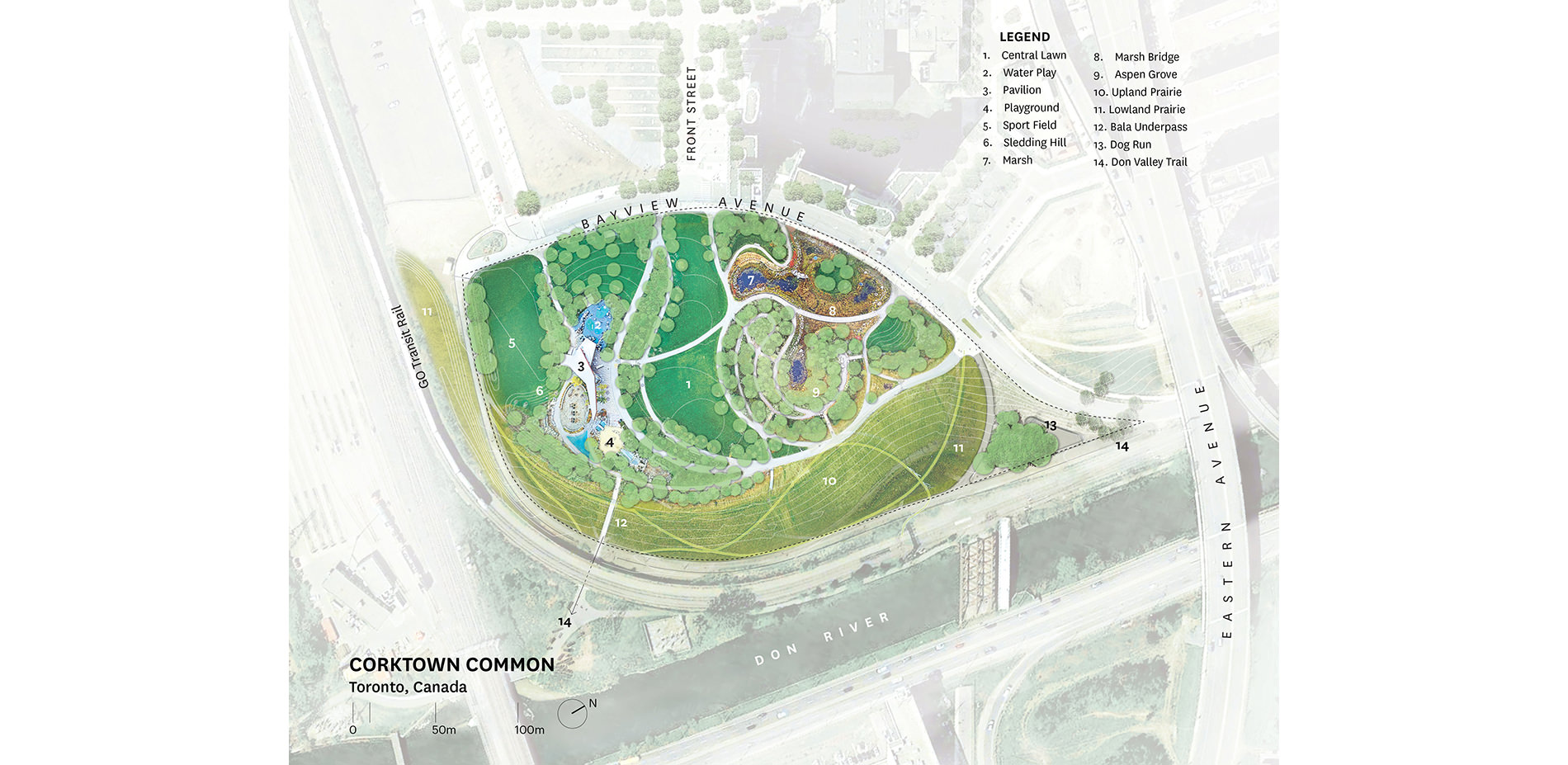
CORKTOWN COMMON
Photo Credit: Michael Van Valkenburgh Associates, Inc.
Media: Please submit high-resolution image requests to images@asla.org.
















